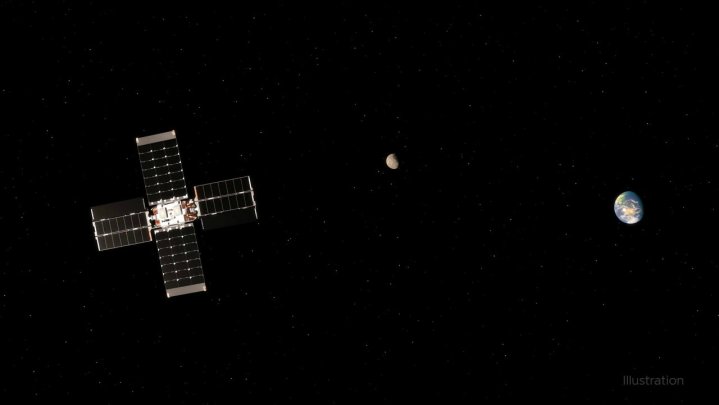This week has seen good news for one NASA moon mission, as the CAPSTONE satellite recovered from a communications issue, but bad news for another. The Lunar Flashlight mission, which is intended to search the south pole of the moon for water ice, now won’t make it to its planned orbit.

The Lunar Flashlight, a small type of satellite called a CubeSat, was launched in December last year but soon experienced problems on its journey. Three of its four thrusters were not working correctly, making it hard for the satellite to perform the maneuvers necessary to enter its planned lunar orbit.
NASA explained in an update that the team at NASA’s Jet Propulsion Laboratory and Georgia Tech tried to address the issue by spinning the spacecraft and firing the one working thruster in 10-minute bursts, which they hoped would push the spacecraft in the required direction. But after several attempts that one thruster stopped working as well.
The spacecraft now almost certainly won’t make it to its planned near-rectilinear halo orbit. All is not completely lost, however. The team is working on a plan to salvage what they can from the mission by getting the satellite into a high Earth orbit, which would allow it to make flybys of the moon and give it the opportunity to collect data from the moon’s south pole.
The satellite only has limited fuel left after the attempts to get it into its original orbit, but the team will try to begin maneuvers this week which could allow it to make its first science pass of the moon in June.
NASA was philosophical in its announcement of the problem, pointing out that Lunar Flashlight was a technology demonstration with a new miniaturized propulsion system — meaning it was essentially a test of a new concept. “Technology demonstrations are high-risk, high-reward endeavors intended to push the frontiers of space technology,” the agency wrote in the announcement. “The lessons learned from these challenges will help to inform future missions that further advance this technology.”



